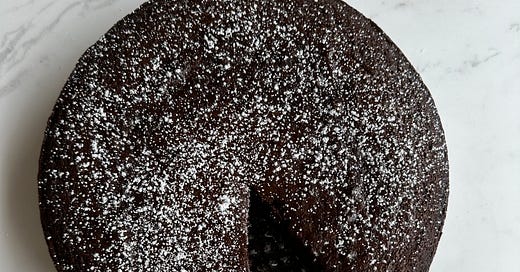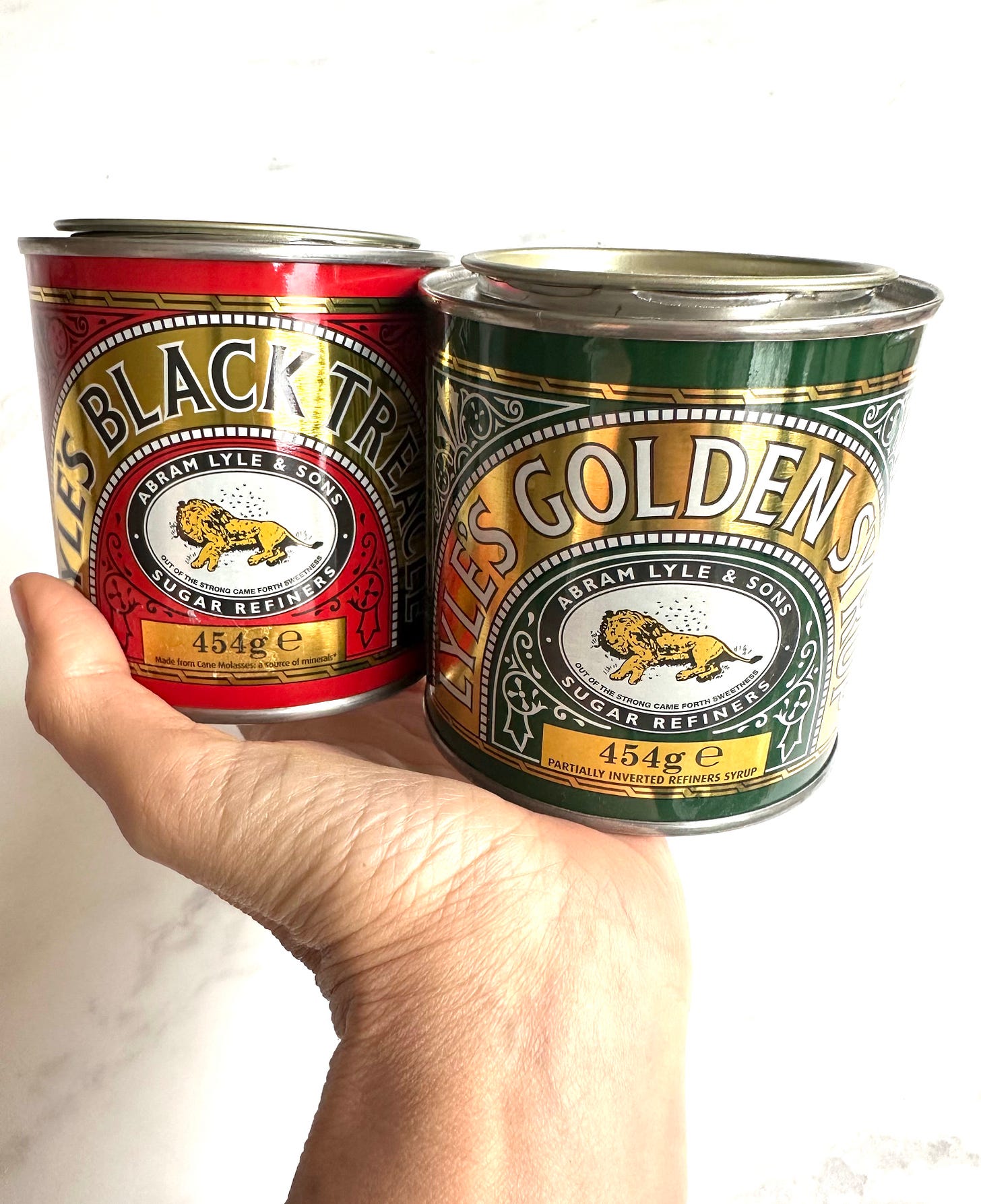Certain foods can transport you to specific times and places: a rib roast slathered in a salt-and-garlic paste takes me to Friday night at my mother’s table; a barbecued hot dog and a little bag of chips to cookouts at summer camp. As a young mother, I fell in love with Laurie Colwin’s books Home Cooking and More Home Cooking and it was then that I became a little obsessed with gingerbread. Since that time, I can’t make a ginger cake without the happiness and exhaustion of caring for three little kids washing over me, even if the three little kids are—it’s always hard to admit—pretty much entirely grown.
In More Home Cooking, Colwin framed gingerbread as nursery food and, although it wasn’t part of my own childhood, I was inspired when she said, “Little children seemed to love it—the spicier the better.” For a recipe, I landed on one Colwin had adapted from a British book by Delia Smith, enticingly titled, “Damp Gingerbread.”
There was a period when I was baking that easy gingerbread almost weekly, the kids gobbling it up predictably, satisfyingly. The cake was delicious as written, but one cold winter day, I wanted it darker—warmer, somehow—in colour and flavour. I had the idea to experiment with the recipe’s second most important ingredient: Lyle’s Golden Syrup, a UK classic I had been excited to discover at the back of a dry good shop at St. Lawrence Market. I was crazy about Lyle’s—its slight exoticism, its unique flavour and composition (not at all the same as corn syrup) and, especially, the charming tin it was packaged in. No way was I quittin’ it altogether, but what if I used half Lyle’s Golden and half molasses, another ingredient I love for its slow, dark complexity and the way it reminds me of my baba, who used to bake it into her swoon-worthy porridge bread?
While I was in the mood to innovate, I fiddled, a bit, with the cake’s spices and my new version kept us in slightly sticky, spicy, complexly dark gingerbread for another chunk of years. I honestly think it was when Lyle’s started to packaged in a rather ordinary glass jar instead my beloved tin that I somehow began to forget to buy it.
But friends, listen to this: The tin is back! Not long ago, there it was, at Bulk Barn of all places (but I’m told available all over). And that’s not all: Beside my familiar green friend was a dashing red stranger, labelled Lyle’s Black Treacle.
After a little playing around in the kitchen, I’m delighted to report that the gingerbread works beautifully with either a mix of the two Lyle’s syrups or Lyle’s Golden and molasses. Personally, I’m happy for an excuse to buy both tins, and the weird dead lion logo only adds to the mystique. (The image and the accompanying biblical slogan, “Out of the strong came forth sweetness,” is, according to Guinness, the oldest branding and packaging in the world.)
Yikes, I’ve got to go. While I’ve been sitting here writing, time has moved rather speedily toward afternoon, and rumour has it a storm’s on its way. I’m going to hurry out to buy groceries in preparation for a full and luxurious stop. I need something for dinner, a few essentials for breakfast and another tin of Lyle’s. If I play it right, there will be hot gingerbread by the time the snow flies and I promise you, there really is no better time.
Bonny’s Damp Gingerbread
Adapated from Laurie Colwin, who adapted from Delia Smith’s Book of Cakes
1/2 cup plus 1 tbsp unsalted butter
3/4 cup Lyle’s Golden Syrup
3/4 cup Lyle’s Black Treacle or Crosby’s Fancy Molasses
2 cups plus 2 tbsp flour
1 heaping tbsp ground ginger (important: the jar should be less than six months old!)
1 3/4 tsp baking soda
1/2 tsp salt
1/2 tsp ground cinnamon
1/4 tsp ground cloves
1 beaten egg
1 cup full-fat milk
Preheat oven to 350 F. Butter a 9-inch springform pan very well along the bottom and up the sides. Melt butter and syrup/molasses on the stovetop over medium heat. Remove from heat.
Into a work bowl, sift together dry ingredients, ensuring there are no lumps. Pour syrup and butter mixture over dry ingredients and mix by hand or with an electric mixer. Add egg and milk and beat until combined. “The batter, Ms. Smith tells us, will be very liquid, and it is,” says Colwin.
Pour into prepared pan and bake about 50 minutes or until the middle is just set. (I start check at 40 minutes because it’s just so much better when ever-so-slightly under.) Dust with powdered sugar and serve with whipped cream, if you desire.







